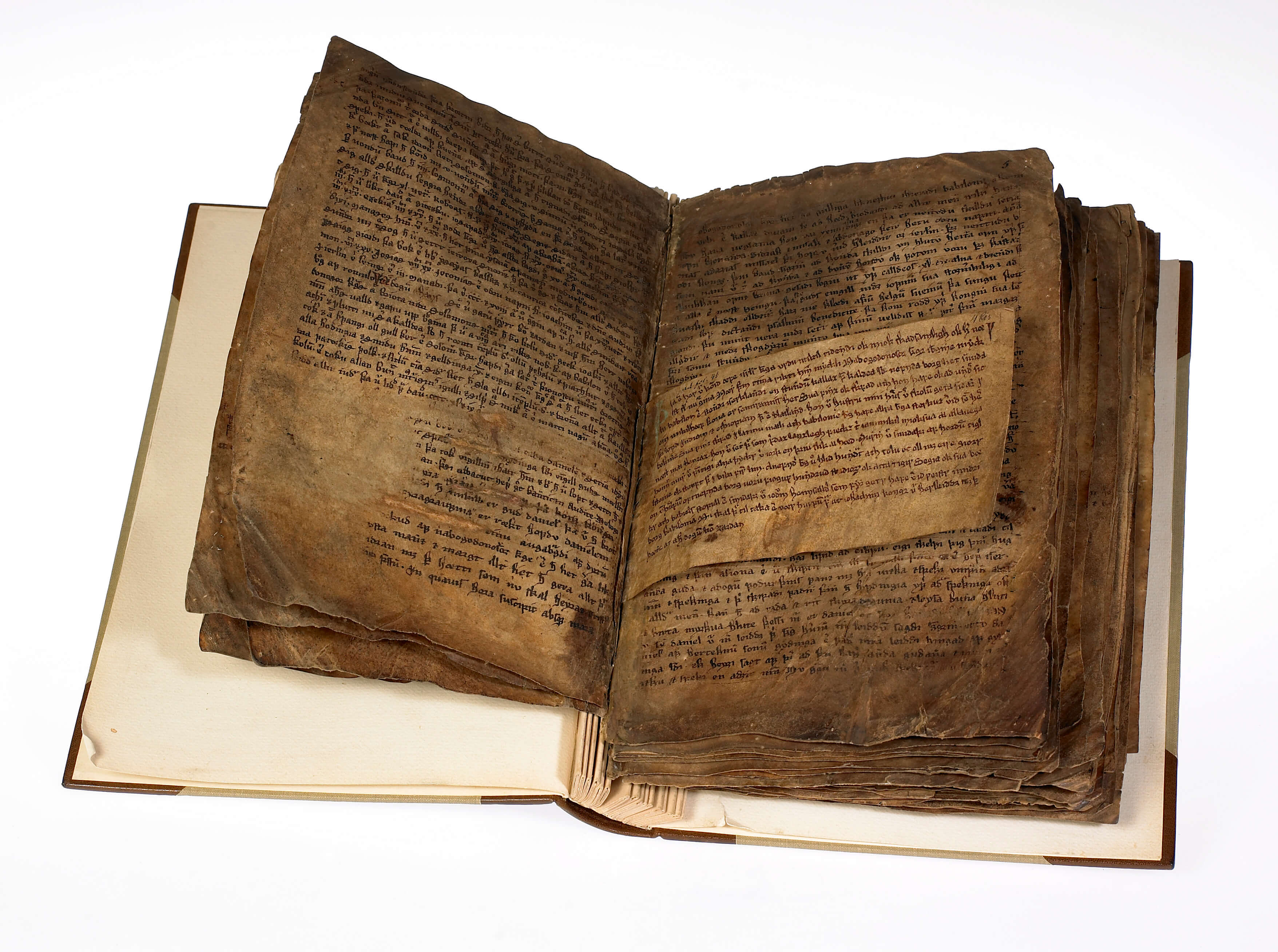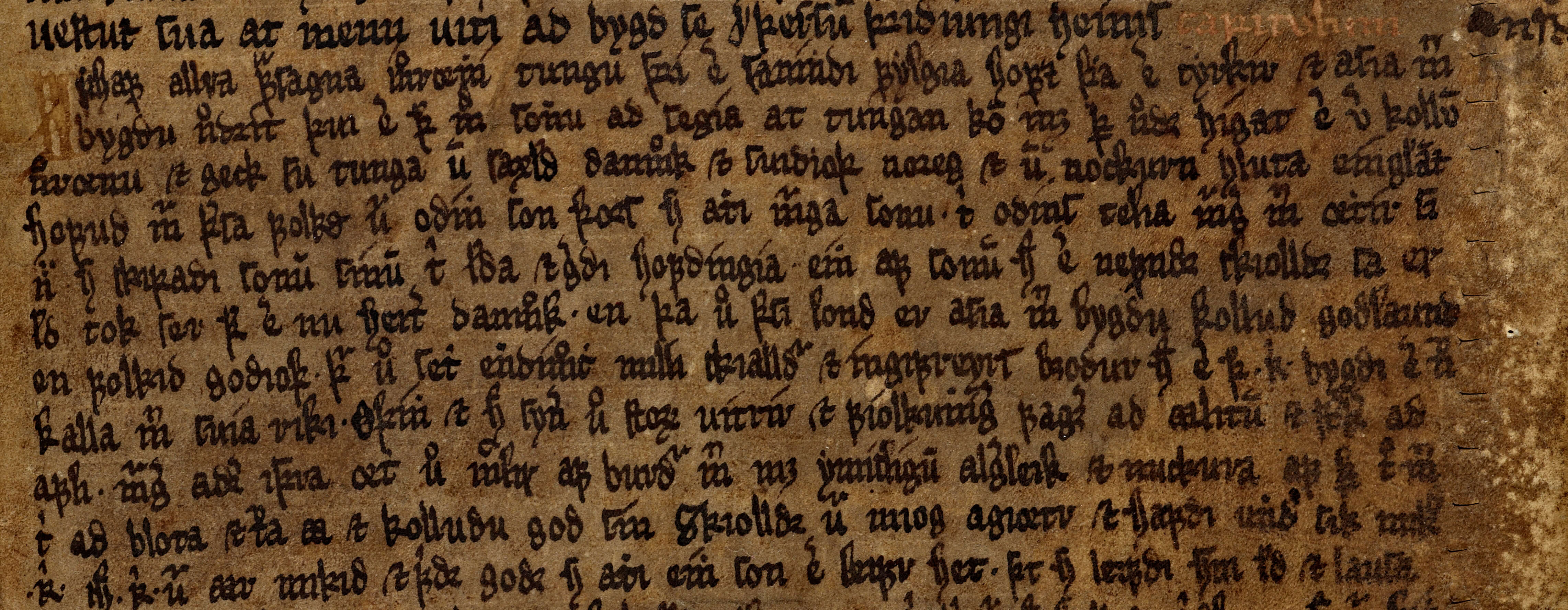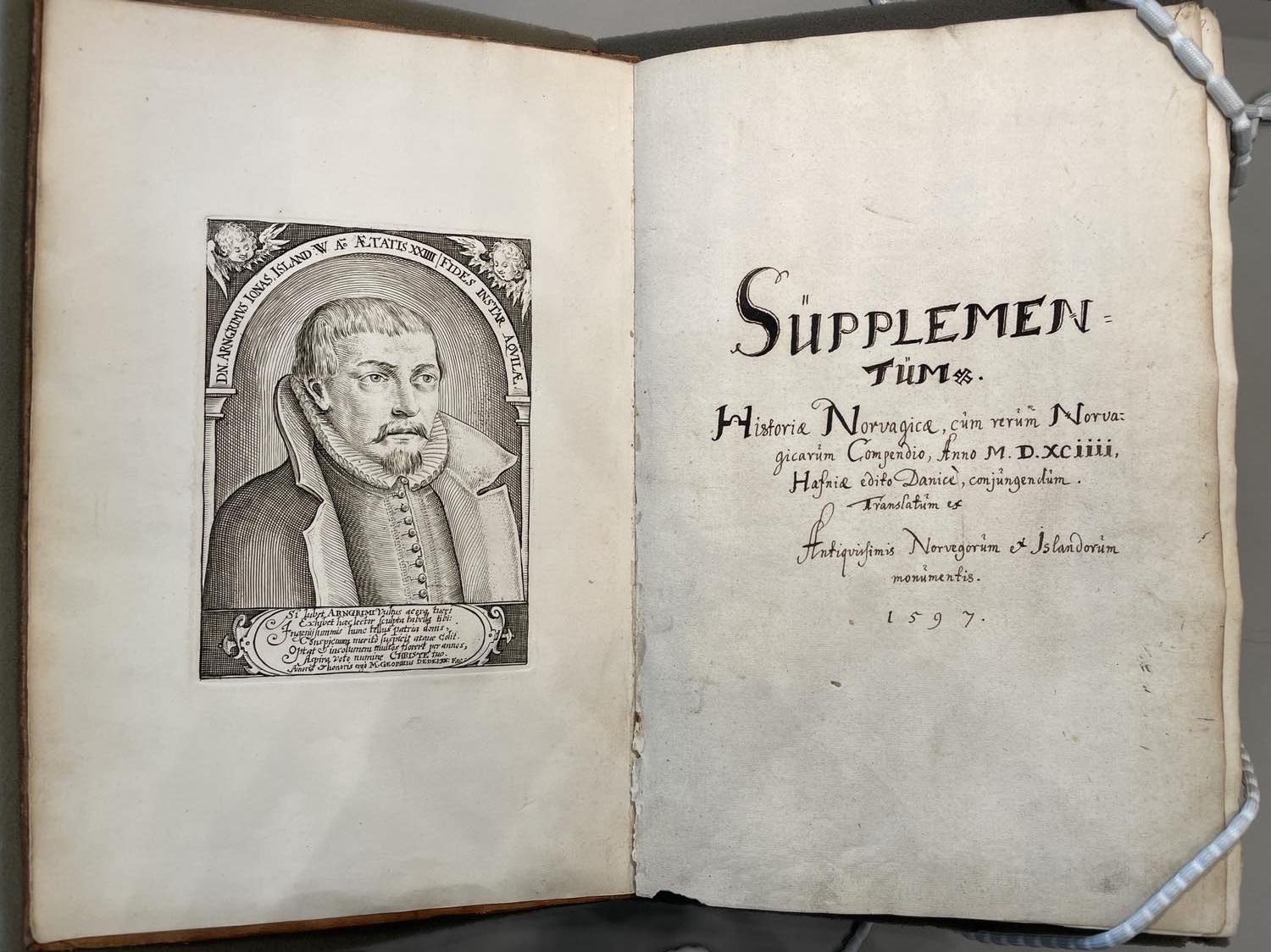Learned prehistory and Danish genealogies
AM 764 4to is a miscellany manuscript written by several hands (at least ten) and can be dated to around the second half of the fourteenth century. Among other material, the manuscript contains some genealogical material thought to derive from a lost Icelandic saga known as *Skjǫldunga saga.

Universal history and learned material
AM 764 4to is also known by the name Reynistaðarbók, since it is believed to be a product of the convent of Reynistaður in the northwest of Iceland. It was likely produced in the timeframe 1376-1386.
The content of the manuscript shows the rising interest for narratives about the so-called universal history: the first part (fol. 1r-23v) contains universal chronicles that divide the ages of the world into macro-classes. This was in accordance with the idea of aetates mundi (”world ages”), which spread throughout Medieval Europe with St. Augustine’s work De civitate dei.
The manuscript’s narration of the first five ages of the world mainly contains a readaption and interpretation of Old Testament material, interspersed with passages about the Trojan war. Other learned histories such as Breta sögur (the Icelandic version of Geoffrey of Monmouth’s Historia regum Britanniae) and Rómverja saga (an Icelandic readaption of Latin works such as Sallust’s De coniuratione Catilinae and Lucan’s Pharsalia) complete the narration of the fifth age of the world. The account of sixth age largely employs the Gospels as a source, focusing on Jesus’s life and passion.
The last two ages are still to come: they include descriptions of the coming of the Antichrist and the final Judgement.
Exemplar genealogies
The content of the Reynistaðarbók, however, is not limited to universal history. A second section follows which appears to be less compact than the first, though with more lacunae in the text. It includes legends and exempla from lives of saints and popes, together with annalistic lists.
Among the other accounts some chapters from Óláfs saga Tryggvasonar are inserted within the exempla. It is therefore interesting to note how, around the middle of f. 40r, the account of the great saga of Óláfr Tryggvason terminates in a narrative genealogy which is known with the name Upphaf allra frásagna (“The beginning of all narratives”). The narrative genealogy traces the first generations of a line of Danish kings, who were ultimately thought to descend from the Norse god Odin.

From Odin to Froði
Upphaf allra frásagna introduces its genealogical material by explaining that Turks and people from Asia brought their language to Saxony, Scandinavia, and some areas of England. It was not uncommon for genealogies to claim a descent from the East and especially from the Trojans: The poet Virgil had done the same thing in the Aeneid. It is highly plausible that this idea of connecting the genealogy to the Trojan myth derived from Frankish sources.
The prologue to Snorra Edda accounts for the same kind of learned prehistory: the association between Æsir (gods/demigods) and Asia was furthermore supported by the similarites between the two names. According to Upphaf allra frásagna, Odin was son of Thor, and he was the leader of the migration from Asia to the North. Odin had many sons, including Skjǫldr and Ingifreyr, who later became the rulers of Denmark and Sweden. The genealogy then lists Leifr, Skjǫldr’s son, and ends with Froði, son of Leifr.
Skjǫldr: the legendary first king of Denmark
By tracing the genealogical row of the kings back to Skjǫldr, Upphaf allra frásagna is thought to be an important witness in reconstructing the narrative core of the lost Skjǫldunga saga. This saga is not preserved, except probably for some fragments of its younger redaction, but can be deduced thanks to Rerum Danicarum Fragmenta (1596), a Latin rendering by the Icelander humanist Arngrímur Jónsson.
Upphaf allra frásagna is an example of how even short lines of genealogy can help in understanding the source that lies behind a text: especially part dealing with Leifr and Froði appears perfectly compatible with Arngrímur’s account. It is therefore highly likely that the two compilers used the same source.

Topics
Contact
Lucia Santercole is academic officer at the Dictionary of Old Norse Prose (ONP)
Bibliography
Bjarni Guðnason (1963), Um Skjöldungasögu, Reykjavík, Bókaútgáfa menningarsjóðs.
Bjarni Guðnason (1982), Danakonunga sǫgur, Reykjavík, Hið íslenzka fornritafélag.
Bruce, Alexander (2002), Scyld and Scef: expanding the analogues, London, Routledge.
Clunies Ross, Margaret (1993), “The Development of Old Norse Textual Worlds: Genealogical Structure as a Principle of Literary Organization in Early Iceland“ in The Journal of English and Germanic Philology 92, 3: 372-85.
Del Zotto, Carla (2013), “Il mito di Troia e la migrazione di Odino in Scandinavia” in Rivista di cultura classica e medievale, 55, 2: 489-515.
Faulkes, Anthony (1982), “Descent from the gods“ in Mediaeval Scandinavia 11: 92-125.
Heusler, Andreas (1908), Die gelehrte Urgeschichte im altisländischen Schriftum, Berlin, Verlag der Königlichen Akademie der Wissenschaften.
Svanildhur Óskarsdóttir (2000), Universal history in fourteenth-century Iceland. Studies in AM 764 4to (PhD dissertation), University College London.
Contribute to Manuscript of the Month
Have something to say about one or more manuscripts in the Arnamagnæn Collection? Contribute to the column Manuscript of the Month to get your research out there! Write to Seán Vrieland (sean.vrieland@hum.ku.dk) for more details.
